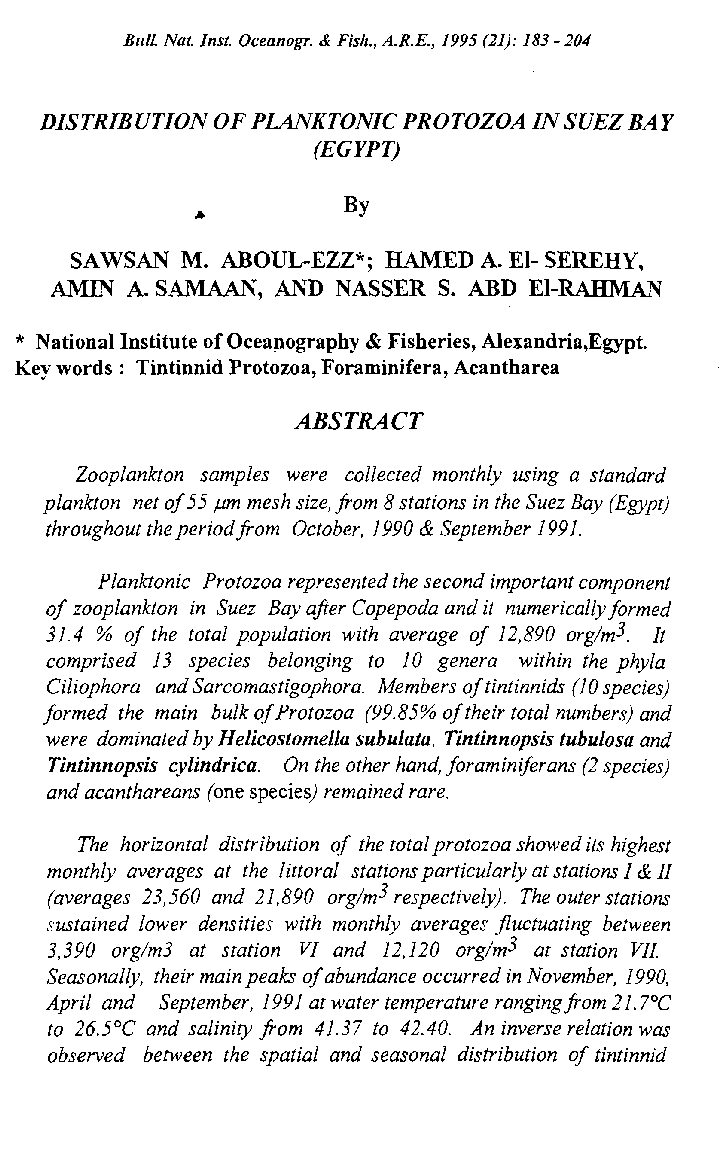Categories
vol-21DISTRIBUTION OF PLANKTONIC PROTOZOA IN SUEZ BAY
(EGYPT)
By
SAWSAN M. ABOUL-EZZ*; HAMED A. EI- SEREHY,
AMIN A. SAMAAN, AND NASSER S. ABD El-RAHMAN
* National Institute of Oceapography & Fisheries, Alexandria,Egypt.
Key words: Tintinnid Protozoa, Foraminifera, Acantharea
ABSTRACT
Zooplankton samples were collected monthly using a standard
plankton net of55 J1lYl mesh size, from 8 stations in the Suez Bay (Egypt)
throughout the periodfrom October, 1990 & September 1991.
Planktonic Protozoa represented the second important component
of zooplankton in Suez Bay after Copepoda and it numerically formed
31.4 % of the total population with average of 12,890 org/m3. It
comprised 13 species belonging to 10 genera within the phyla
Ciliophora and Sarcomastigophora. Members oftintinnids (l0 species)
formed the main bulk ofProtozoa (99.85% oftheir total numbers) and
were dominated by Helicostomella subulata, Tintinnopsis tubulosa and
Tintinnopsis cylindrica. On the other hand, foraminiferans (2 species)
and acanthareans (one species) remained rare.
The horizontal distribution of the total protozoa showed its highest
monthly averages at the littoral stations particularly at stations I & II
(averages 23,560 and 21,890 org/m3 respectively). The outer stations
sustained lower densities with monthly averages fluctuating between
3,390 org/m3 at station VI and 12,120 org/m3 at station VI!
Seasonally, their main peaks ofabundance occurred in November, 1990,
April and September, 1991 at water temperature ranging from 21. 7°C
to 26.5°C and salinity from 41.37 to 42.40. An inverse relation was
observed between the spatial and seasonal distribution of tintinnid







